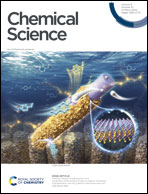Characterization of emerging 2D materials after chemical functionalization
Abstract
The chemical modification of 2D materials has proven a powerful tool to fine tune their properties. With this motivation, the development of new reactions has moved extremely fast. The need for speed, together with the intrinsic heterogeneity of the samples, has sometimes led to permissiveness in the purification and characterization protocols. In this review, we present the main tools available for the chemical characterization of functionalized 2D materials, and the information that can be derived from each of them. We then describe examples of chemical modification of 2D materials other than graphene, focusing on the chemical description of the products. We have intentionally selected examples where an above-average characterization effort has been carried out, yet we find some cases where further information would have been welcome. Our aim is to bring together the toolbox of techniques and practical examples on how to use them, to serve as guidelines for the full characterization of covalently modified 2D materials.

- This article is part of the themed collection: 2024 Chemical Science Perspective & Review Collection


 Please wait while we load your content...
Please wait while we load your content...